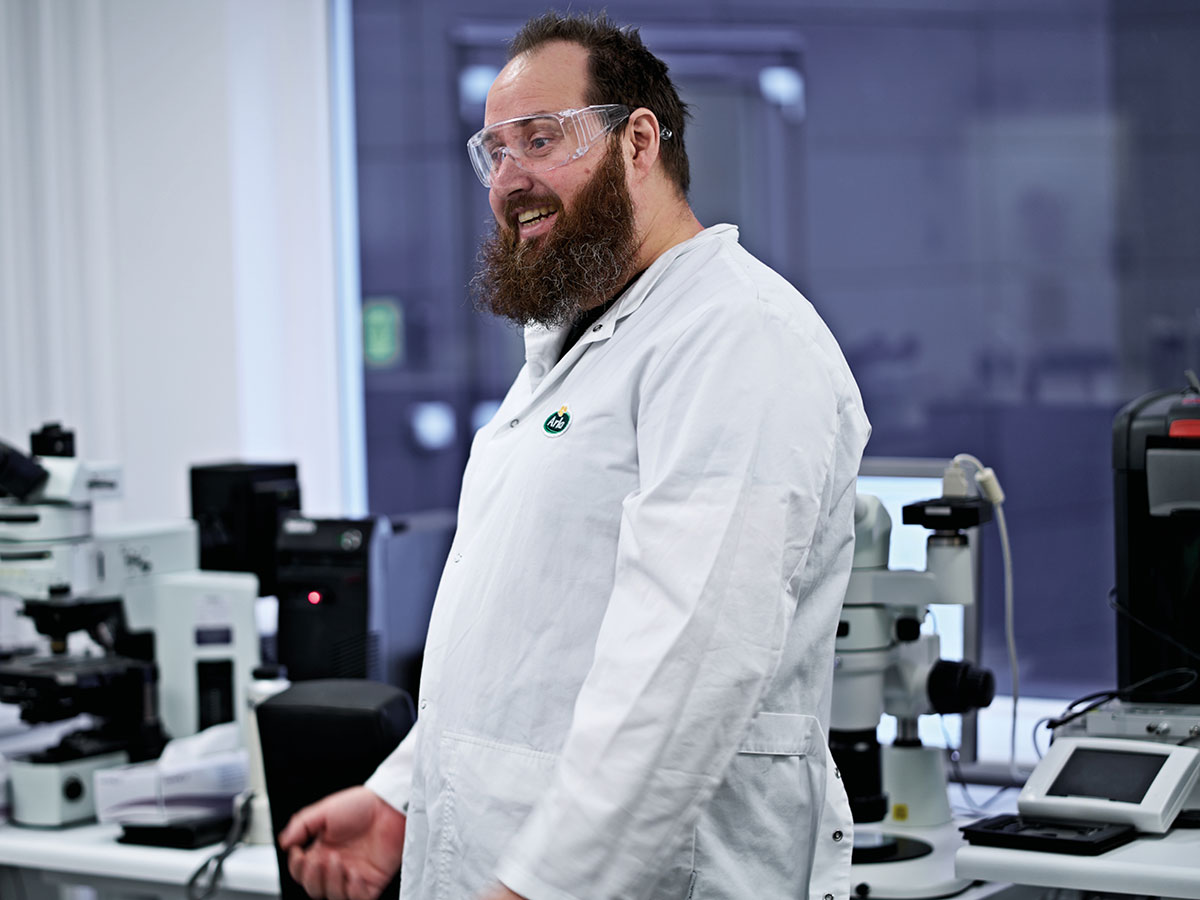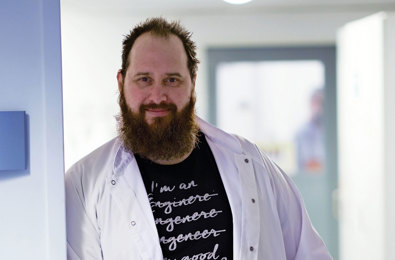Solve the riddle and use science to develop nutrition
Scientists often joke that the exclamation you really want to hear in the lab isn’t ‘Eureka!’, it’s ‘What the …?’ That was the beginning of my discovery that beta-lactoglobulin could be crystallized from whey. We do things here that haven’t been done before, and that allows me to go into discovery mode and apply everything I’ve learned to solve the riddles of protein.
When wondering leads to a wonder
One day in the lab, I noticed something strange happening to the whey at some of our setpoints. It went from clear to cloudy, with a thick residue at the bottom, just during my lunchbreak. ‘What the … ?’ I thought. It turned out that it was beta-lactoglobulin crystals, which was surprising, because protein doesn’t usually crystallize just like that. I started looking into it, and soon I could get beta yields of 45% all the way up to 75% from whey. Long story short, we now have a new patented and award-winning process. Soon, we’ll start production of a protein ingredient for kidney patients that is lower in minerals, especially phosphor than what was previously possible, and this can increase the patients’ chance of survival and give them longer time to find a donor.

Solving the riddle of protein
I’ve been interested in proteins since researching how proteomic analysis via mass spectrometry of intestine tissue could help predict the onset of ulcerative colitis for my thesis. My experience with protein chemistry landed me my job here, and I couldn’t be happier. We’re doing things here no one else can, working in partnership with universities, medical researchers and international collaborators. Every discovery we make has a host of additional benefits. Crystallizing beta also helps us produce a protein ingredient containing more leucine per gram protein than a normal whey. Leucine is the amino acid that triggers muscle growth, which is useful for the elderly with limited appetite, or for elite athletes wanting nothing but the best. I love applying logic and knowledge to solve riddles and utilize the raw material of whey in the best way possible.
Family science
We have a great and very collaborative work environment here, where we can discuss all aspects of the scientific puzzles we face. It’s a relaxed atmosphere with room for funny coffee mugs and t-shirts. I have dyslexia, and my colleagues are always very helpful if I need a proofreading before sending an e-mail to external partners. It’s also a workplace that respects your family time. I love spending time with my children, showing them small experiments like making red cabbage juice change colour by adding an acid, or playing with potato starch as a non-Newtonian fluid. Seeing them marvel at their first glimpse of the wonders science can create is really something special. Actively engaging and educating children and students in science is a natural part of my life.

